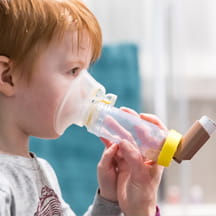With the majority of novel coronavirus cases in the U.S. affecting adults, many pediatric health care experts are devoting their energies toward research, prevention and cure—including studying the infection's impact across the pediatric population and aiding the development of a vaccine.
Susan Coffin, M.D., M.P.H., associate chief, division of infectious diseases, Children's Hospital of Philadelphia (CHOP), is working to better understand the basics of COVID-19 in hopes of informing the best prevention strategies. The basis of her research: samples from about 150 children diagnosed with COVID-19 and treated at CHOP—about 10% of whom required hospitalization.
Along with lead author William Otto, M.D., a fellow with the division of infectious diseases at CHOP, Coffin will share her findings in a soon-to-be-published study. Children's Hospitals Today caught up with Coffin to discuss the study, why it's important and what she's learned so far.
Tell us about the research you're doing—how will it help in the overall efforts to control and prevent COVID-19?
One of the things I'm most interested in learning is the natural history of the virus. We need to better understand how someone progresses through the infection—from exposure to infection, becoming sick, experiencing bad complications and then to recovery. This is a classic infectious disease study with a new type of pathogen.
An important area of concern is around transmission. How does the virus move from one person to another, and what are the determinants of the person who's exposed becoming infected and sick with the virus? These are the unanswered questions right now that must be answered.
Barring a vaccine, understanding transmission dynamics is probably our best strategy for designing the narrowest—but most effective—prevention strategy.
As an expert in pediatric infectious diseases, you're no stranger to new viruses. What are you seeing thus far that makes COVID-19 different?
To date, a small proportion of the total cases from just about any jurisdiction are children. This is really different than the vast majority of respiratory viruses, where children tend to have the most frequent and severe symptoms. Understanding why that is—and whether it is in some way linked to their role in transmission to adults—are key questions.
It may also seem obvious, but the volume of all this makes the experience very different everywhere. Because it's a novel virus moving through a global community with zero immunity, we're seeing a huge number of people being simultaneously exposed to something that's never circulated previously.
Also, having a virus that can transmit when someone is asymptomatic—or has so few symptoms that the infected persons don't really perceive themselves as being sick—makes our capacity to study and control transmission more challenging.
How are you approaching those challenges?
The classic way to approach the challenge of ascribing a new type of infection is simply to gather up cases that are identified through clinical channels; essentially every child presenting for care who is ultimately diagnosed with the new infection would become a subject of study. But we have a growing understanding that the virus is present in some people without there being any symptoms, so we need different approaches to understand the full spectrum of infection. That's where you would consider community-based studies—instead of focusing only on children who present for medical care, looking at cohorts of children in more typical community settings.
Right now we're focusing on children who have sought care and testing at CHOP, but I would like to do a community-based study looking at children at the time they return to school. I want to see what happens over time to children who have not been previously infected but are returning to school—both to them and to their families. That would be a next step.
Can you share any preliminary learnings from your research?
If we take 100 children who have symptoms consistent with coronavirus infection and 100 children who are otherwise healthy, we can, on occasion, find one or two children among the healthy group in whom we can detect minute quantities of the virus.
By contrast, we can sometimes detect coronavirus at rates as high as 10% among the sick children. The point is, we have very low rates of detection of the virus in otherwise healthy children present in such minute quantities that it is not likely to be a cause of transmission of infection. Much more study is needed to verify that, but I do think there is a differential of risk from a child passing coronavirus to an adult based on whether they do or don't have symptoms.


